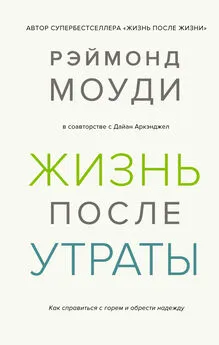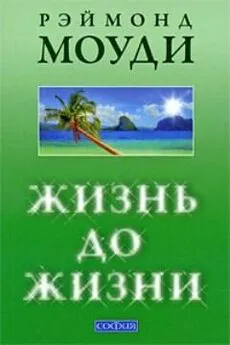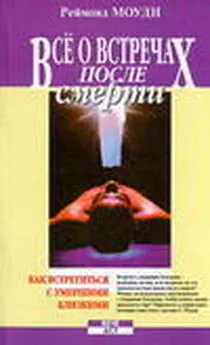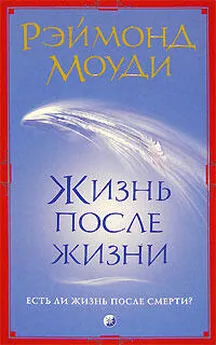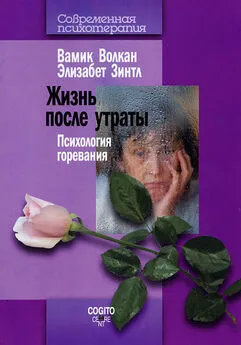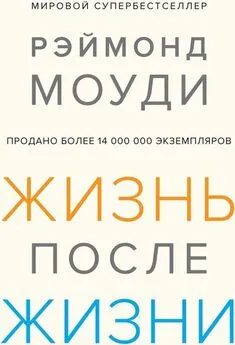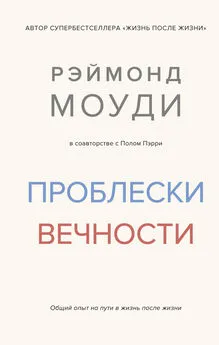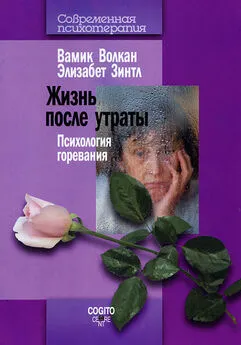Рэймонд Моуди - Жизнь после утраты: Как справиться с горем и обрести надежду
- Название:Жизнь после утраты: Как справиться с горем и обрести надежду
- Автор:
- Жанр:
- Издательство:КоЛибри
- Год:2021
- ISBN:978-5-389-19421-2
- Рейтинг:
- Избранное:Добавить в избранное
-
Отзывы:
-
Ваша оценка:
Рэймонд Моуди - Жизнь после утраты: Как справиться с горем и обрести надежду краткое содержание
Жизнь после утраты: Как справиться с горем и обрести надежду - читать онлайн бесплатно ознакомительный отрывок
Интервал:
Закладка:
Adler, Ronald B., and Neil Towne. Looking Out/Looking In: Interpersonal Communication. New York: Holt, Rinehart & Winston, 1987.
American Association of Suicidology, prepared by John L. McIntosh. Survivors of Suicide Fact Sheet. Washington, DC, 1998.
American Cancer Society. Life After Loss Facilitator’s Handbook, Atlanta, GA, 1999.
American Psychiatric Association. Let’s Talk About Panic Disorder. Washington, DC: APA, 1992.
Arcangel, Dianne. “Heather’s Return.” Journal of the American Society for Psychical Research 93 (1999): 226-31.
— “Tribute to Karlis Osis.” Journal of the American Society for Psychical Research 90 (1996): 228–230.
— “The Wheel of Life Review.” Journal of the American Society for Psychical Research 91 (1997): 353-56.
Astin, J. A., E. Harkness, and E. Ernst. “The Efficacy of ‘Distant Healing’: A Systematic Review of Randomized Trials.” Annals of Internal Medicine 132 (2000): 903-10.
Bowlby, John. Attachment and Loss, Vol. 1: Attachment. New York: Basic Books, 1982.
Bowlby, John. Attachment and Loss, Vol. 3: Loss: Sadness and Depression. New York: Basic Books, 1980.
“A Boy Says Good Bye to His Dad.” Texas Magazine, November 22, 1964. P. 1.
Cantor, Christopher, and Penelope J. Slater. “Marital Breakdown, Parenthood, and Suicide.” Journal of Family Studies 1 (October 1995): 91-102.
Carlson, Margaret. “Farewell, John.” Time, August 2, 1999. P. 33.
Compassionate Friends. “New Statistics on Death of a Child Available,” We Need Not Walk Alone, Anniversary Issue, Oakbrook, IL, 1999.
Connally, Nellie, with Michael Druary. “Texas’ First Lady Relives the Day the President Died.” Texas Magazine, November 22, 1964. Originally published by McCall’s magazine, 1964.
Cook, Emily Williams, Bruce Greyson, and Ian Stevenson. “Do Any Near-Death Experiences Provide Evidence for the Survival of Human Personality After Death? Relevant Features and Illustrative Case Reports.” Journal of Scientific Exploration 12 (1998): 377–406.
DeSpelder, Lynne Ann, and Albert Lee Strickland. The Last Dance: Encountering Death and Dying. Mountain View, CA: Mayfield, 1992.
Doka, Kenneth J. Disenfranchised Grief. Lexington, MA: Lexington Books, 1989.
Dossey, L. Healing Beyond the Body. Boston: Shambhala, 2001.
— “Immortality.” Alternative Therapies in Health and Medicine 6 (2000): 12.
— Reinventing Medicine. San Francisco: HarperSanFrancisco, 1999.
Erikson, Erik H. Identity: Youth and Crisis. New York: Norton, 1968.
Erikson, Erik H. Insight and Responsibility. New York: Norton, 1968.
Fitzgerald, Helen. The Grieving Child: A Parent’s Guide. New York: Simon & Schuster, 1992.
Fodor, J. “The Big Idea.” (New York) Times Literary Supplement, July 3, 1992. P. 20.
Gamino, Louis A. “Why ‘Just Get Over If Doesn’t Work: Lessons from the Scott and White Grief Study (1994–1997).” Paper presented at Clinical Challenges in Bereavement: Beyond Supportive Care, Austin, TX, October 6, 2000.
Greeley, Andrew M. Religious Change in America. Cambridge: First Harvard University Press, 1996.
Grey son, Bruce. “Near-Death Experiences.” In Varieties of Anomalous Experience: Examining the Scientific Evidence, edited by Etzel Cardena, Steven Jay Lynn, and Stanley Krippner. P. 315–352. Washington, DC: American Psychological Association, 2000.
Greyson, Bruce, and Chuck Flynn, eds. The Near-Death Experience: Problems, Prospects, Perspectives. Springfield, IL: Charles C. Thomas, 1984.
Hirsh, S. Using the Myers-Briggs Type Indicator in Organizations: A Resource Book. Palo Alto, CA: Consulting Psychologists Press, 1985.
Holmes, T. S., and R. H. Rahe. “The Social Readjustment Rating Scale.” Journal of Psychosomatic Research 11 (1967): 213–218.
Huber, Terri. No Time Out from Grief: Surviving the Death of My Son. Writers Club Press/iUniverse.com, 2000.
Jonas, W. B. “The Middle Way: Realistic Randomized Controlled Trials for the
Evaluation of Spiritual Healing.” Journal of Alternative and Complementary Medicine 7 (2001): 5–7.
Jowett, Benjamin, trans. The Works of Plato, 1945.
Jung, C. Psychological Types. New York: Princeton University Press, 1971.
Kastenbaum, Robert. Psychology of Death. New York: Springer, 1992.
Keirsey, D., and Marilyn Bates. Please Understand Me. Del Mar, CA: Gnosology Books, 1984.
Kircher, Pamela. Love Is the Link: A Hospice Doctor Shares Her Experience of Near-Death and Dying. New York: Larson, 1995.
Kroeger, O., and J. Thuesen. Type Talk. New York: Dell, 1988.
Kilbler-Ross, Elisabeth. Death, the Final Stage of Growth. Englewood Cliffs, NJ: Prentice-Hall, 1975.
—. On Death and Dying. New York: Macmillan, 1969.
Lawrence, G. Descriptions of the Sixteen Types. Gainesville, FL: Center for Applications of Psychological Type, 1993.
Lundahl, Craig R., ed. A Collection of Near-Death Research Readings:Scientific Inquiries into the Experiences of Persons Near Physical Death. Chicago: Nelson-Hall, 1982. Compilation of work by Osis, Haraldsson, Ring, Moody, Noyes, Grosso, and others.
Maddox, J. “The Unexpected Science to Come.” Scientific American, December 1999. P. 62–67.
Martin, Terry L., and Kenneth J. Doka. Men Don’t Cry… Women Do: Transcending Gender Stereotypes of Grief. Philadelphia: Brunner/Mazel, 2000.
Matthews, Jim. Four Dark Days in History: November 22, 23, 24, 25. Los Angeles: Special Publications, 1963.
McCaulley, M. The Myers-Briggs Type Indicator and Leadership. Gainesville, FL: Center for Applications of Psychological Type, 1988.
Miller, L. “Boomers Hire Consultants to Help Go from Good Life to ‘Good Death.’” Wall Street Journal, February 25, 2000. P. 1.
Miller, Lyle H., and Alma Dell Smith. The Stress Solution. New York: Pocket Books, 1993.
Moody, R. Life After Life. New York: Bantam Books, 1975.
Morse, Melvin, and Paul Perry. Closer to the Light: Learning from the Near-Death Experiences of Children. New York: Random House, 1991.
— Transformed by the Light: The Powerful Effect of Near-Death Experiences on People’s Lives. New York: Villard, 1992.
Myers, I. Introduction to Type. Palo Alto, CA: Consulting Psychologists Press, 1962.
Myers, I., and M. McCaulley. A Guide to the Development and Use of the MBTI: A Manual. Gainesville, FL: Center for Applications of Psychological Type, 1985.
Neimeyer, Robert. Lessons of Loss: A Guide to Coping. Philadelphia: Brunner Routledge, 2001.
— ed. Death Anxiety Handbook: Research, Instrumentation, and Application. Washington, DC: Taylor & Francis, 1994.
Noyes, R., Jr., and R. Kletti. “Depersonalization in the Face of Life-Threatening Danger: An Interpretation.” Omega 7 (1976): 103–114.
Parma, S., D. G. Waller, R. Yeates, and P. Fenwick. “A Qualitative and Quantitative Study of the Incidence, Features and Aetiology of Near Death Experiences in Cardiac Arrest Survivors.” Resuscitation 48 (2001): 149–156.
Piaget, Jean. The Child's Construction of the World. London: Routledge & Kegan Paul, 1929.
Radin, Dean, and Jannine Rebman. “Are Phantasms Fact or Fantasy? A Preliminary Investigation of Apparitions Evoked in the Laboratory.” Journal of the Society for Psychical Research 61 (1996): 843.
Rando, Therese A. Treatment of Complicated Mourning. Champaign, IL: Research Press, 1993.
Ring, Kenneth. Heading Toward Omega: In Search of the Meaning of Near-Death Experience. New York: Morrow, 1984.
— Life at Death: A Scientific Investigation of the NearDeath Experience. New York: Morrow, 1982.
Ring, Kenneth, Sharon Cooper, and Charles Tart. Mindsight: Near-Death and Out of Body Experiences in the Blind. Palo Alto, CA: William James Center for Consciousness Studies at the Institute of Transpersonal Psychology, 1999.
Ring, Kenneth, and Evelyn Valarino. Lessons from the Light: What We Can Learn from the Near-Death Experience. Portsmouth, NH: Moment Point Press, 2000.
Sabom, Michael. Light and Death: One Doctor’s Fascinating Account of Near-Death Experiences. Grand Rapids, MI: Zondervan, 1998.
Sanders, Catherine M. Grief: The Mourning After, Dealing with Adult Bereavement. New York: Wiley, 1989.
Selye, Hans. Selye’s Guide to Stress Research. 3 vols. New York: Van Nostrand Reinhold, 1983.
— Stress Without Distress. New York: Signet Books, 1974.
Sife, Wallace. The Loss of a Pet, the Human-Animal Bond. New York: Macmillan, 1993.
Some, Malidoma Patrice. Of Water and the Spirit. New York: Putnam, 1994.
Stephenson, John S. Death, Grief, and Mourning: Individual and Social Realities. New York: Free Press, 1985.
Stroebe, Margaret, Wolfgang Stroebe, and Robert O. Hansson, eds. Handbook of Bereavement: Theory, Research, and Intervention. New York: Cambridge Univ. Press, 1999.
Tubesing, Nancy, and Donald Tubesing. Structured Exercises in Stress Management. Vol. 1. Duluth, MN: Whole Person Press, 1983.
Walsh, John. Tears of Rage: From Grieving Father to Crusader for Justice — The Untold Story of the Adam Walsh Case. New York: Pocket Books, 1997.
Weenolsen, Patricia. Transcendence of Foss over the Fife Span. New York: Hemisphere, 1988.
Weiss, Brian. Messages from the Masters: Tapping into the Power of Love. New York: Warner Books, 2000.
Wiitala, Geri Colozzi. Heather’s Return: The Amazing Story of Communications from Beyond the Grave. Virginia Beach, VA: A.R.E. Press, 1996.
Wolfelt, Alan D. Death and Grief: A Guide for Clergy. Levittown, PA: Accelerated Development, 1988.
Worden, William. Grief Counseling and Grief Therapy: A Handbook for the Mental Health Practitioner. New York: Springer, 1991.
Zalaznik, Patricia. Bibliography on Grief. Minneapolis, MN: Abundant Resources, 1995.
Примечания
1
L. Miller, “Boomers Hire Consultants to Help Go from Good Life to ‘Good Death,’” Wall Street Journal, February 25, 2000. Р. 1.
2
L. Dossey, Healing Beyond the Body (Boston: Shambhala, 2001).
3
S. Parma and others, “A Qualitative and Quantitative Study of the Incidence, Features and Aetiology of Near Death Experiences in Cardiac Arrest Survivors,” Resuscitation 48 (2001): 149–156.
4
J. Searle, цитата приведена на обложке Journal of Consciousness Studies, vol. 2, issue 1, 1995.
5
J. Fodor, “The Big Idea,” (New York) Times Literary Supplement, July 3, 1992. Р. 20.
6
J. Maddox, “The Unexpected Science to Come,” Scientific American, December 1999. Р. 62–67.
7
L. Dossey, Reinventing Medicine (San Francisco: HarperSanFrancisco, 1999).
8
J. A. Astin, E. Harkness, and E. Ernst, “The Efficacy of ‘Distant Healing’: A Systematic Review of Randomized Trials,” Annals of Internal Medicine 132 (2000): 903–910; W. B. Jonas, “The Middle Way: Realistic Randomized Controlled Trials for the Evaluation of Spiritual Healing,” Journal of Alternative and Complementary Medicine 7 (2001): 5–7.
9
L. Dossey, “Immortality,” Alternative Therapies in Health and Medicine 6 (2000): 12.
10
Пер. с англ. Якова Фельдмана.
11
Джон Боулби, психиатр, бывший президент Международной ассоциации детской психиатрии, провел масштабные исследования и опубликовал крайне важные открытия в области человеческой привязанности и горя. Если вы хотите узнать больше об этой теме, особенно рекомендуем его книгу Attachment and Loss, том 1: Attachment (2-е изд., 1982) и том 3: Loss: Sadness and Depression (1980). (На русском языке выходили его книги «Привязанность», «Создание и разрушение эмоциональных связей».)
Читать дальшеИнтервал:
Закладка:
